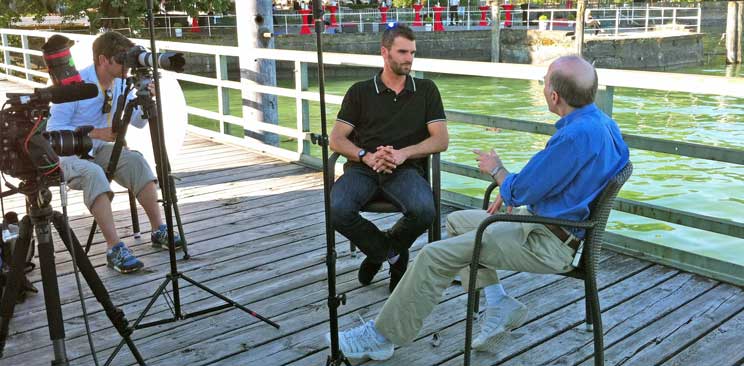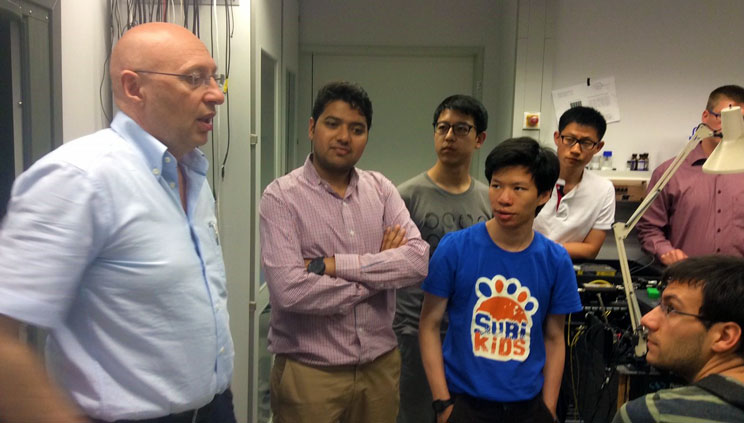
As we approach the end of the year, it’s easy to get a little reflective and reminisce about the highs and the lows. For me, 2015 had a massive highlight: I was lucky enough to attend the 65th Lindau Nobel Laureate Meeting as part of the Australian EMCR delegation sent by the Australian Academy of Science. I would like to share some insights into this experience.
Twelve months ago, when I saw the email from the Australian Academy of Science calling for nominations to attend, I looked at the website and thought: this looks pretty amazing. I put my application in just before the deadline and, a few months later, was notified that I had been accepted to attend. In preparation, the successful applicants were invited to Canberra to attend Science at the Shine Dome, the Australian Academy of Science’s premier conference. Here we were briefed as a group about Lindau, given plenty of opportunity to meet and get to know the other EMCRs who were going, as well as enjoy a fantastic conference showcasing some of the best research from around Australia. Being from the west coast, this was also an opportunity for me to meet with some of our collaborators in Canberra and Sydney and begin to develop some of my own collaborations while on the other side of the country.
In June, we were off to Germany. I wanted to ensure I was in tiptop form for the conference, so I went a few days earlier and spent some time in Munich ‘acclimatising’ prior to the start of the official program. It was a great opportunity to take in some of the sights, history and German culture before the conference began. Lindau is a small island on the eastern side of Lake Constance, in the south of Germany, a beautiful location with historic buildings, cobbled streets and snow-capped mountains creating the perfect backdrop. This year’s Lindau Nobel Laureate Meeting was interdisciplinary, with laureates from the disciplines of chemistry, physics and medicine creating a unique conference with great diversity in both the presentations and delegates. The plenary lectures delivered by laureates were outstanding; they discussed the work they had won the award for, their own pathway in science and what they were working on now. For me, the most interesting times were the question-and-answer sessions, and when we had laureates join us for meals in smaller groups—in these situations I really had an opportunity to get to know the laureates on a personal level.
A great initiative of the Nobel Laureate meetings is the mediatheque: an online resource of recordings of all the talks and discussions, as well as many other extras. I would encourage those wanting a taste of what it was like to attend, and the quality of the inspirational talks, to check it out.
For an EMCR insight into Lindau, and some discussions with laureates around current key issues facing science, take a look at the short films produced by the Nature Publishing Group. The second film features fellow Aussie Emma Beckett and me discussing opportunities for women in science with two Nobel laureates, Ada Yonath and Saul Perlmutter.
Following the conference, the Academy organised a number of laboratory tours and visits throughout the region, with Professor Jim Williams, a Fellow of the Academy as our guide. We were able to tour labs at the Paul Scherrer Institute in Switzerland, a multidisciplinary research institute housing an impressive array of particle accelerators on site, and also a number of Max Planck institutes in Germany. The Max Planck institutes were a highlight, providing a great insight into the quality of research and facilities available at these world-renowned centres. We were even treated to a tour from Stefan Hell (Nobel Prize winner in Chemistry, 2014) of his own labs and saw one of the original super-resolved fluorescent microscopy set-ups he had used to make his groundbreaking discoveries.

This trip was my highlight of 2015. Perhaps it will be yours in one of the coming years—look out for the call for applications!
Tristan Clemons
Research Associate, School of Chemistry and Biochemistry
University of Western Australia
© 2025 Australian Academy of Science